Seconded By: Ioannis Galanopoulos Papavasileiou,
The Middle East is the most water-scarce region in the world and has the largest liquid freshwater losses on the planet, according to NASA and the University of California study. This is due to climate change, population growth, and socioeconomic development.
We Used to Watch the Rivers Go By is a 4-year writing, photography, and video project about the loss of ecosystems and waterways, in the ancient Fertile Crescent region of Jordan, Lebanon, Syria, Palestine, and Iraq. Year one of this project will focus on the water crisis and forest degradation in Jordan, a region with the world’s scarcest renewable water resources per capita, teetering on the brink of survival due to climate change, heat, and misuse of water resources. This is leading to the death of endemic trees at Dana Biosphere Reserve, one of Jordan’s most ecologically diverse forests, and, threaten the critical balance of the last remaining wetlands of Azraq in North Eastern Jordan. Connecting land and water, I aim to reimagine narratives about nature through oral history, collective memory, and indigenous knowledge to protect biodiversity and engage communities.
My project is an important initiative to inspire future generations and document local experiences before they are gone—a momentous opportunity to harness indigenous knowledge for the advancement and restoration of ecosystems.
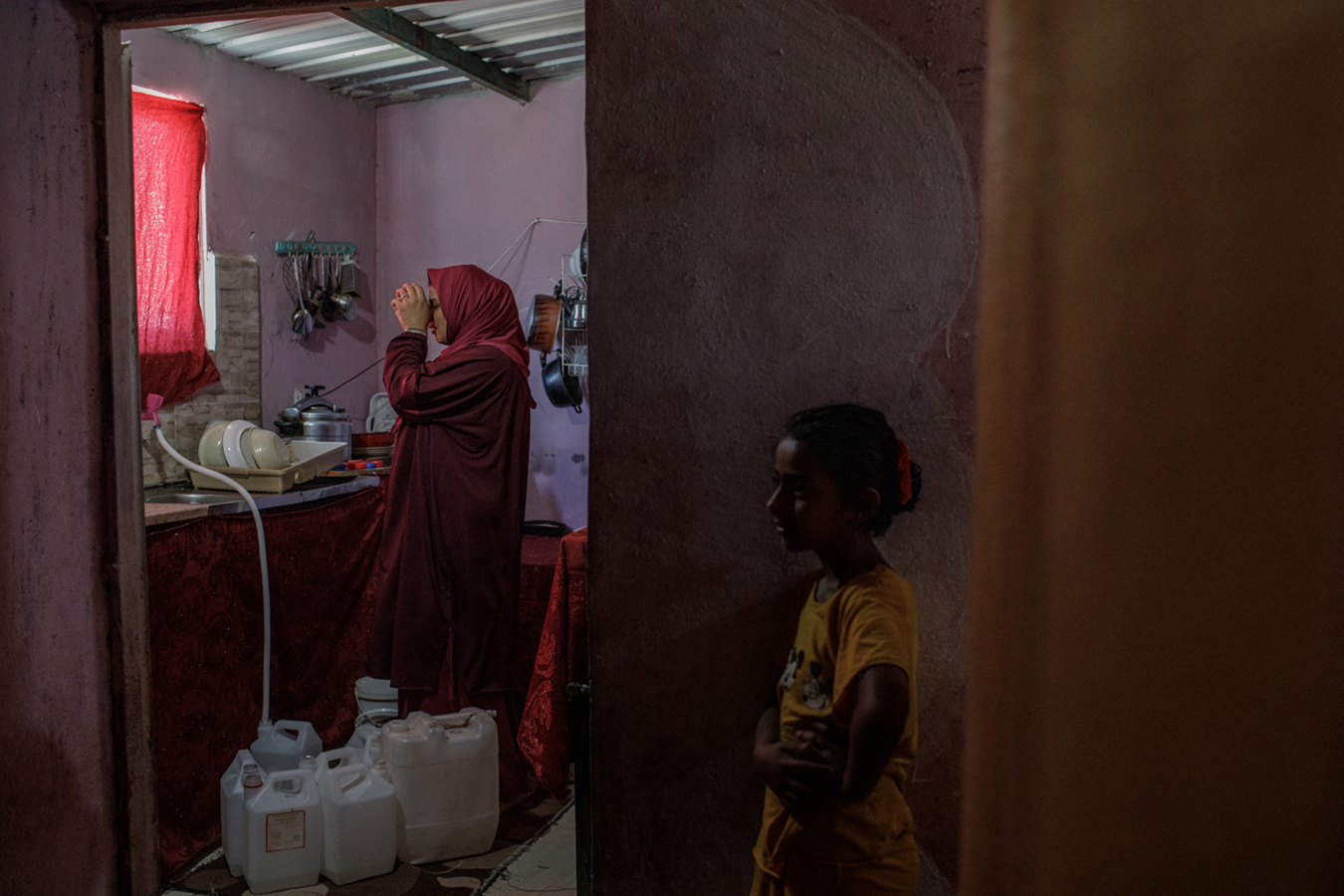
We Used To Watch The Rivers Go By
Water scarcity in Jordan disproportionately affects lower-income neighborhoods and refugee camps, unlike larger cities where access is more regular. At the Jerash Palestinian Refugee Camp in northern Jordan, water distribution occurs once every three to five weeks, a stark contrast to the weekly supply in urban areas. To cope, Um Raed collects gallons of water to tide them over during dry spells. In this small house, where three families reside, the scant water supply barely lasts a week, exacerbating the hardship for all.
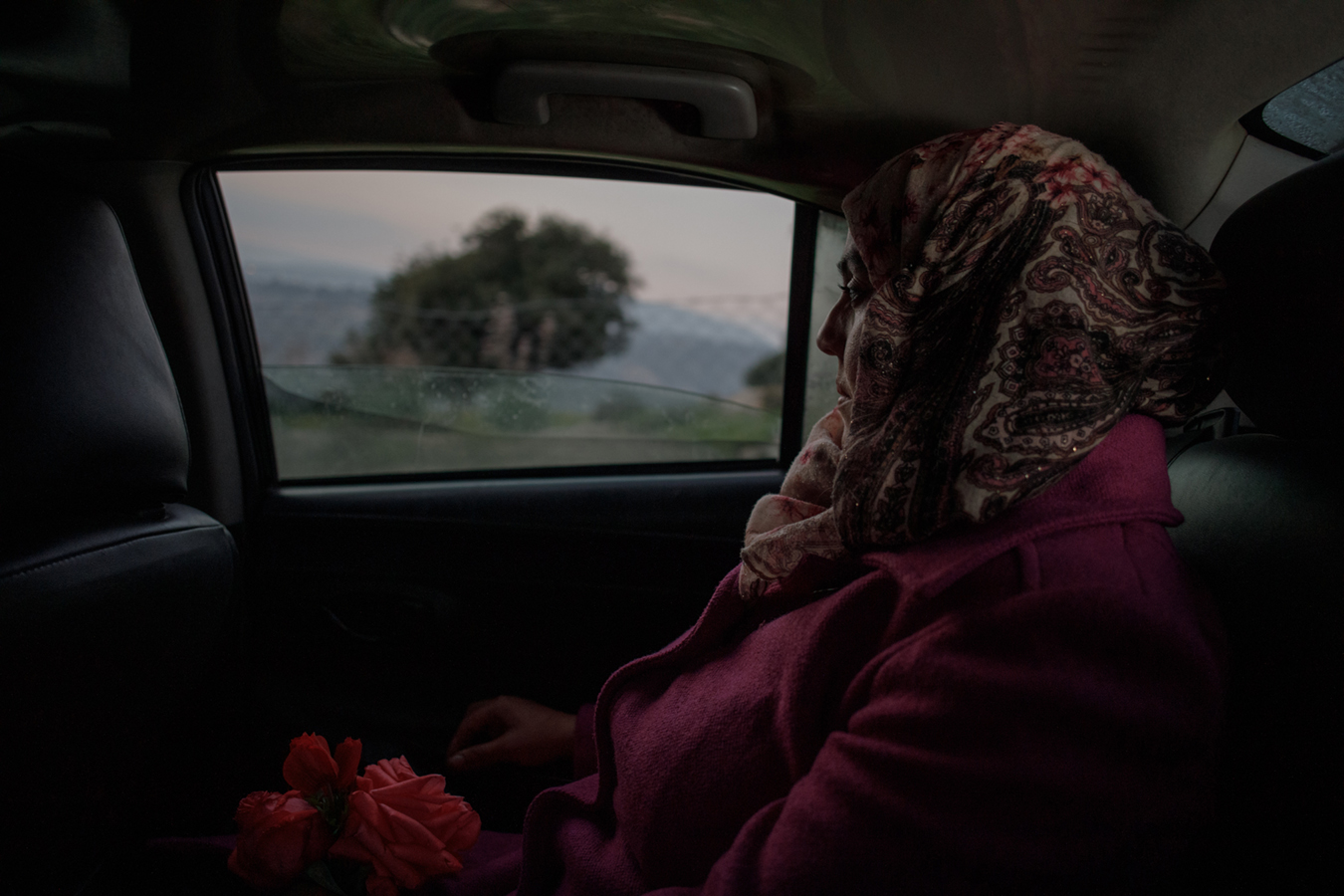
We Used To Watch The Rivers Go By
Maram, a 31-year-old mother of five, faces the challenge of being the primary breadwinner as her husband has been unemployed since losing his job during the COVID-19 pandemic. She has secured a six-month contract with WADI for Sustainable Ecosystems Development, an organization devoted to planting native trees, and working closely with local communities to leverage indigenous knowledge, especially regarding water collection and navigation in desert terrains. WADI’s mission is also rooted in the belief that by empowering local women with knowledge and skills, these women can inspire their communities to protect native trees and forests. Additionally, WADI focuses on fostering women’s independence, hiring both Jordanian nationals and refugees, and equipping them with the ability to find employment elsewhere after their training. As Maram takes a taxi to work, she treasures flowers given to her by her daughter from their garden, symbolizing the personal connection to the cause.
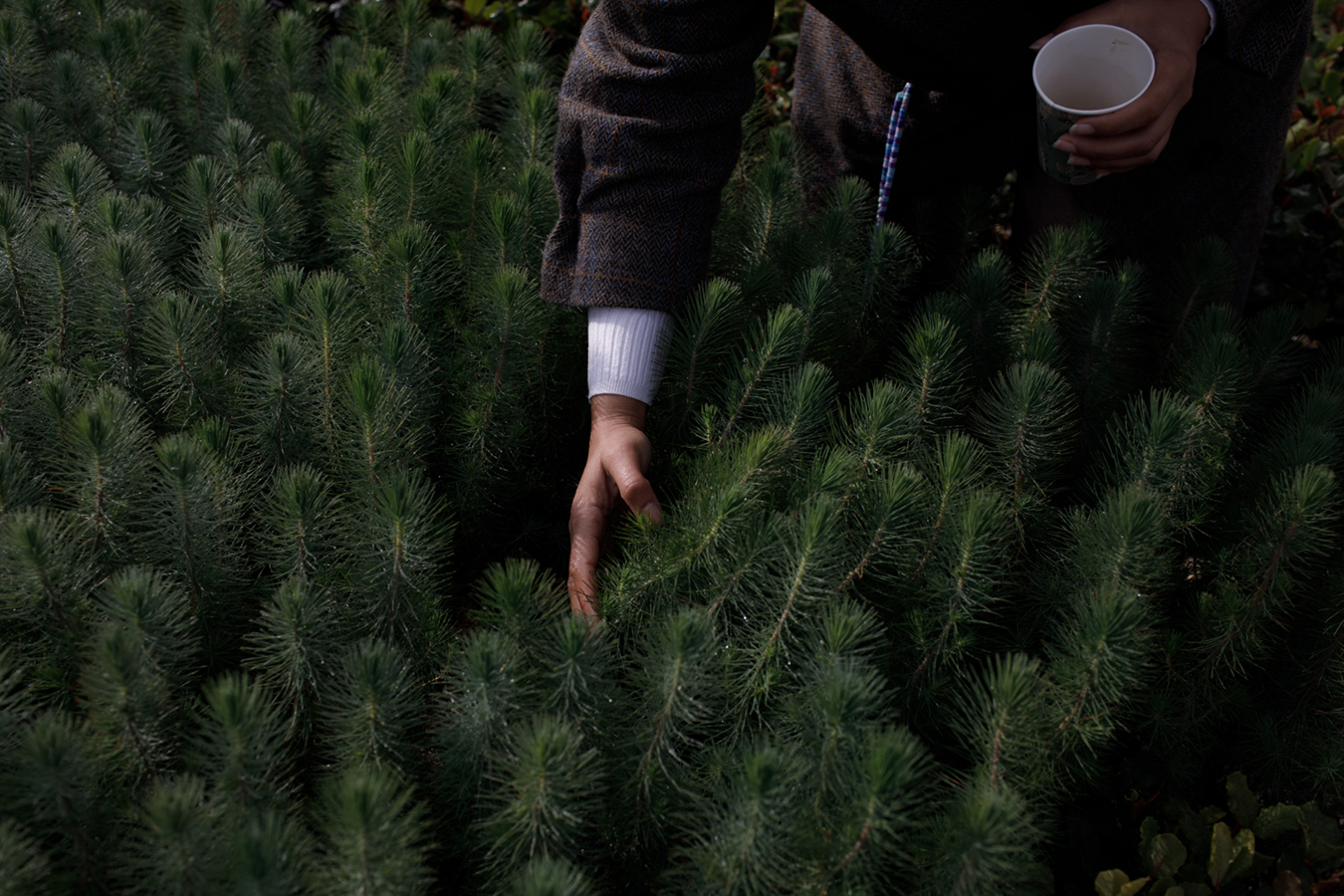
We Used To Watch The Rivers Go By
The Aleppo pine trees are the predominant species in the Dibeen Forest, situated in northern Jordan, distinguished by its remarkable biodiversity. The forest’s wide range of tree ages and sizes is attributed to the varied topography provided by the region’s valleys, which introduces distinct humidity levels and soil conditions. Within this geographical context, the Aleppo pines of Dibeen represent the oldest and most substantial specimens in the Kingdom, marking the southeastern boundary for this forest type across the globe. The area receives an annual precipitation of roughly 400 millimeters. Dibeen Forest serves as an exemplary model of Aleppo pine-oak ecosystems, hosting a minimum of 17 species classified as endangered, including the Persian squirrel. This diversity underscores the forest’s global ecological significance. Sanaa, a field officer with WADI Sustainable Ecosystems, conducts periodic assessments of young native pine trees at one of their nurseries, situated approximately 20 kilometers from Amman.
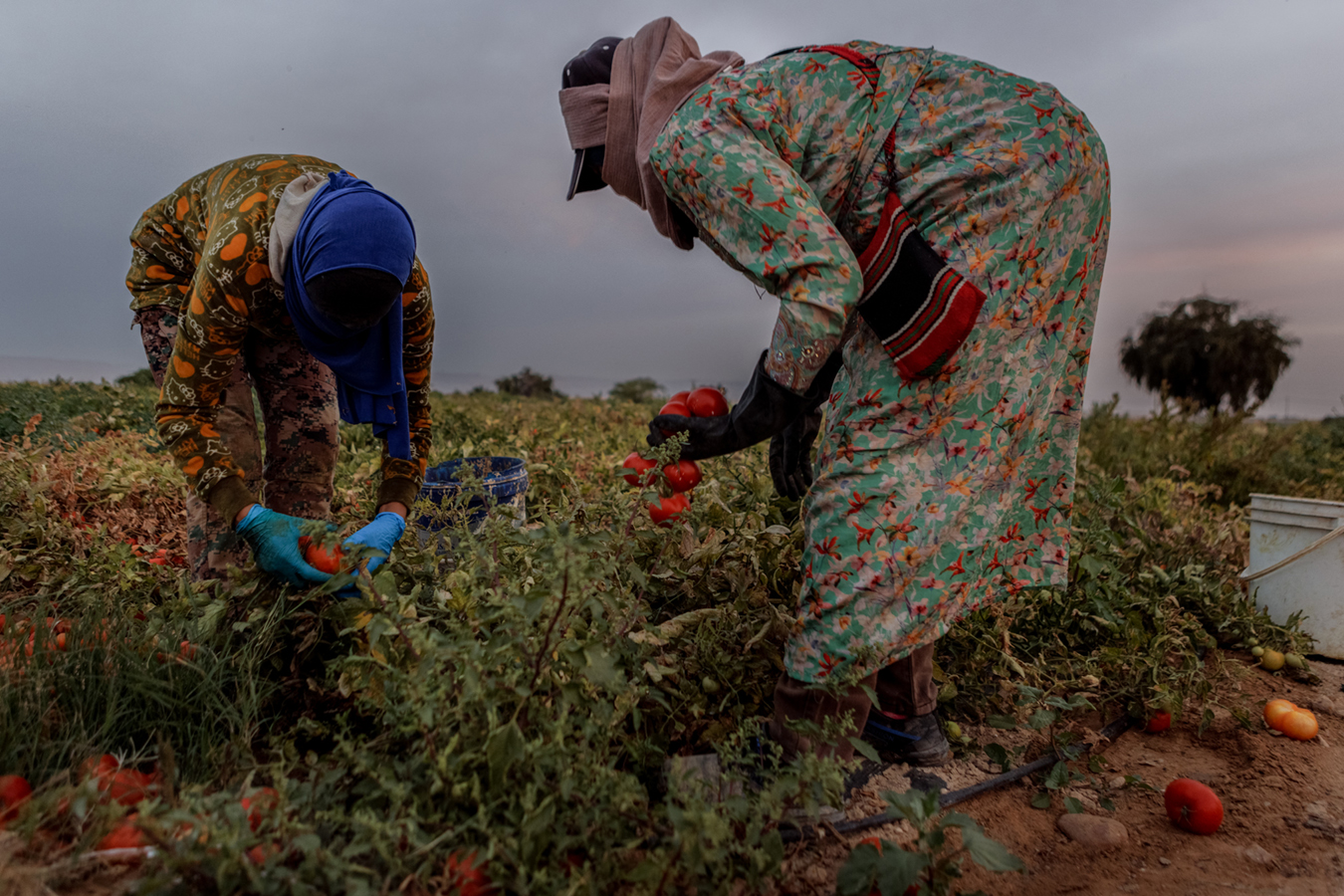
We Used To Watch The Rivers Go By
Local Jordanian women harvest tomatoes at a farm in the southern Jordan Valley—a region where climate change delivers a dual crisis of destructive floods and relentless droughts. Some farms here are run by women who shoulder disproportionate risks. When floods wipe out crops, they plunge into debt after borrowing money to fund their farming operations. As day laborers working for other farmers, they earn just 6 JD (about $8.50) per day for backbreaking work. Their already fragile livelihoods can disappear overnight if the farms fail. These women return home to impoverished neighborhoods lacking piped water and electricity, forced to purchase expensive tanked water and borrow power from adjacent communities. Meanwhile, the Jordan Valley—the nation’s agricultural heartland—faces collapse. The Farmers Union has declared a state of emergency as crops wither; pests spread unchecked; and water sources vanish. The King Talal Dam, which supplies 60% of the valley’s irrigation, sits at critical lows, while the Jordan River’s flow has shrunk to <10% of its historical volume. The Dead Sea recedes by 1.2 meters yearly, compounded by climate change, water disputes, and overconsumption. As harvests shrink, costs rise, and crop prices fall, farming communities spiral deeper into poverty. Survival here hinges on resilience, but without systemic change, even that may not be enough.

We Used To Watch The Rivers Go By
Bassil Al Saleh, a 35-year-old Syrian refugee, tends to his newly established cucumber farm in Azraq Wetland with his brother. Their 9m x 4m plastic greenhouse utilizes Dutch Pocket drip irrigation – a crucial water-saving technique in this drought-prone region. Innovative yet practical, Bassil incorporates local volcanic tuf rocks in his setup; their porous, sponge-like structure helps distribute water efficiently while providing sturdy support for young plants. This small but significant agricultural project, made possible through funding support, represents both resilience and adaptation as Azraq’s farmers confront dwindling water resources.
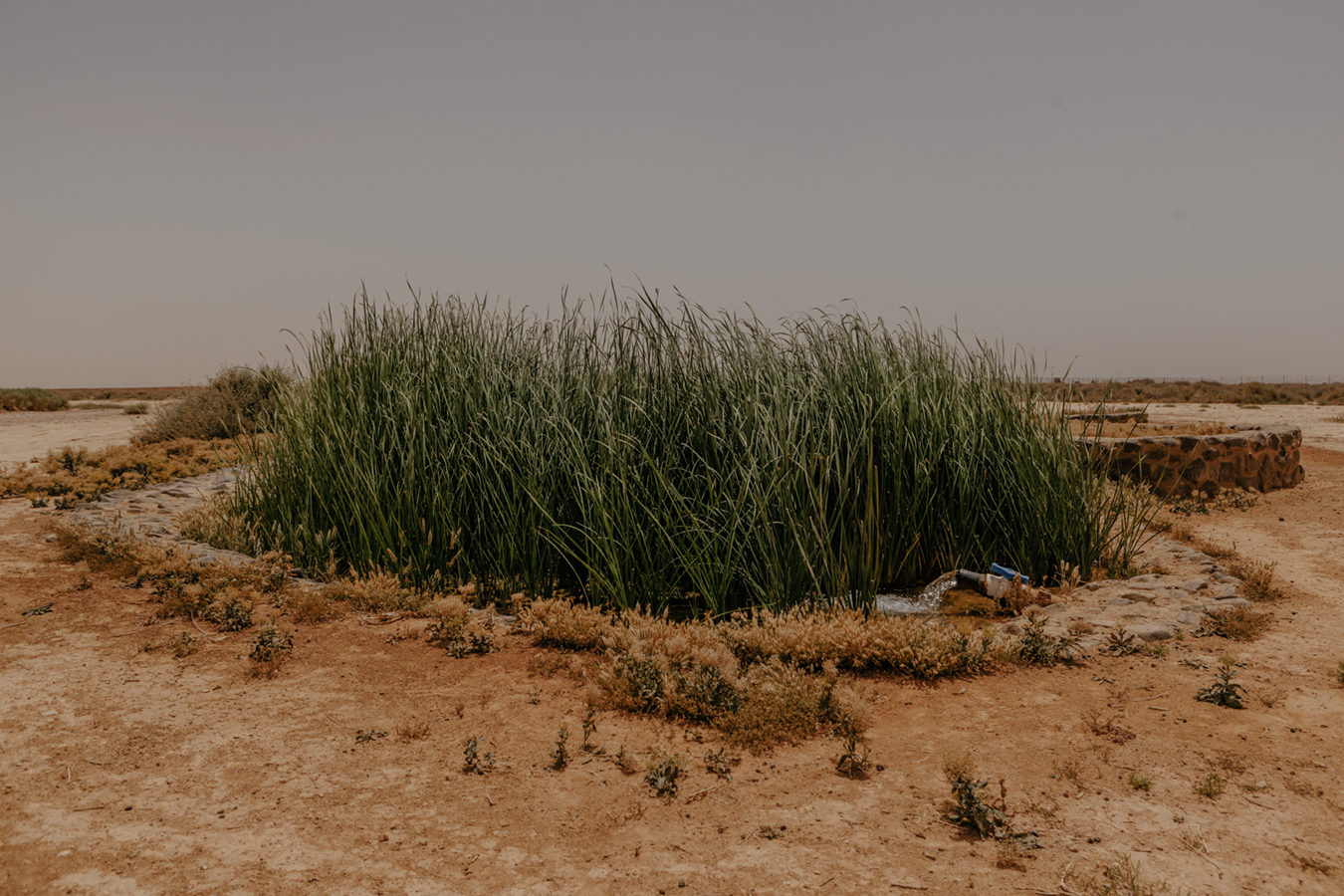
We Used To Watch The Rivers Go By
An artificial pond at Shaumari Wildlife Reserve at Azraq city, filled with groundwater pumped from the dwindling Azraq Basin, carefully crafted from Halfa grass to sustain birds and insects in Azraq’s fragile ecosystem. Once abundant when the wetland thrived, Halfa was traded by locals with Palestinians for flour, sugar, and citrus—a testament to the oasis’s lost vitality. Now, 100km from Amman, this 22km² sanctuary (established in 1975 by Jordan’s Royal Society for the Conservation of Nature) fights to protect endangered species in a landscape where water is running out.
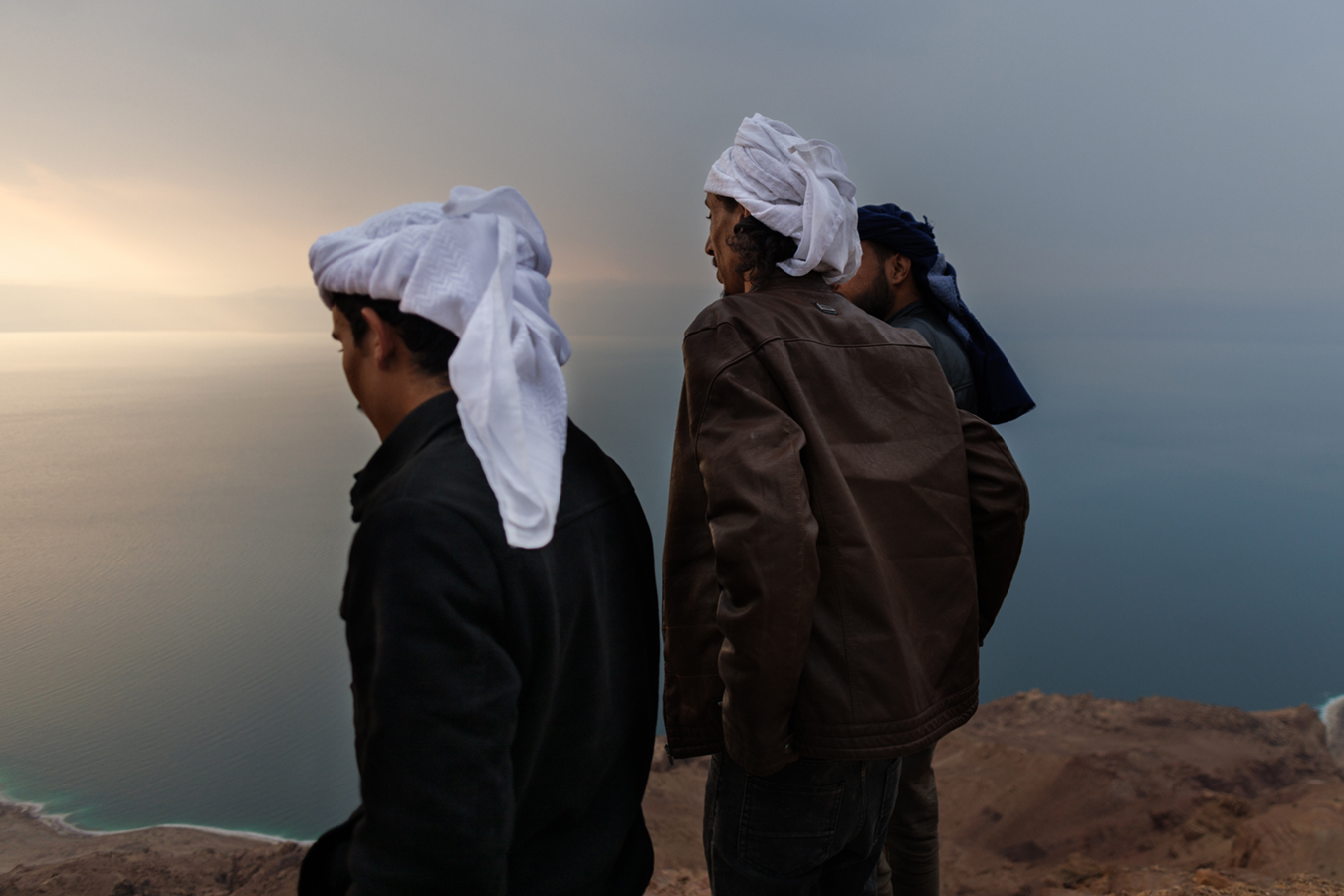
We Used To Watch The Rivers Go By
Bedouin community members Mousa, Ismail, and Ibrahim Owaidat, originally from BeerSheba in Palestine, observe the Dead Sea shoreline from the surrounding cliffs. Their multi-generational presence in the region has preserved traditional knowledge of desert riverbeds, water sources, and flow patterns. The group currently partners with WADI for Sustainable Ecosystems on native vegetation restoration initiatives, utilizing their expertise to identify optimal planting sites for drought-adapted species. The Owaidat family’s involvement in these conservation efforts provides a case study in combining traditional environmental knowledge with modern restoration methodologies. Their work contributes to ongoing scientific research documenting native species survival rates, groundwater recharge patterns, and the effectiveness of various planting techniques in arid conditions.
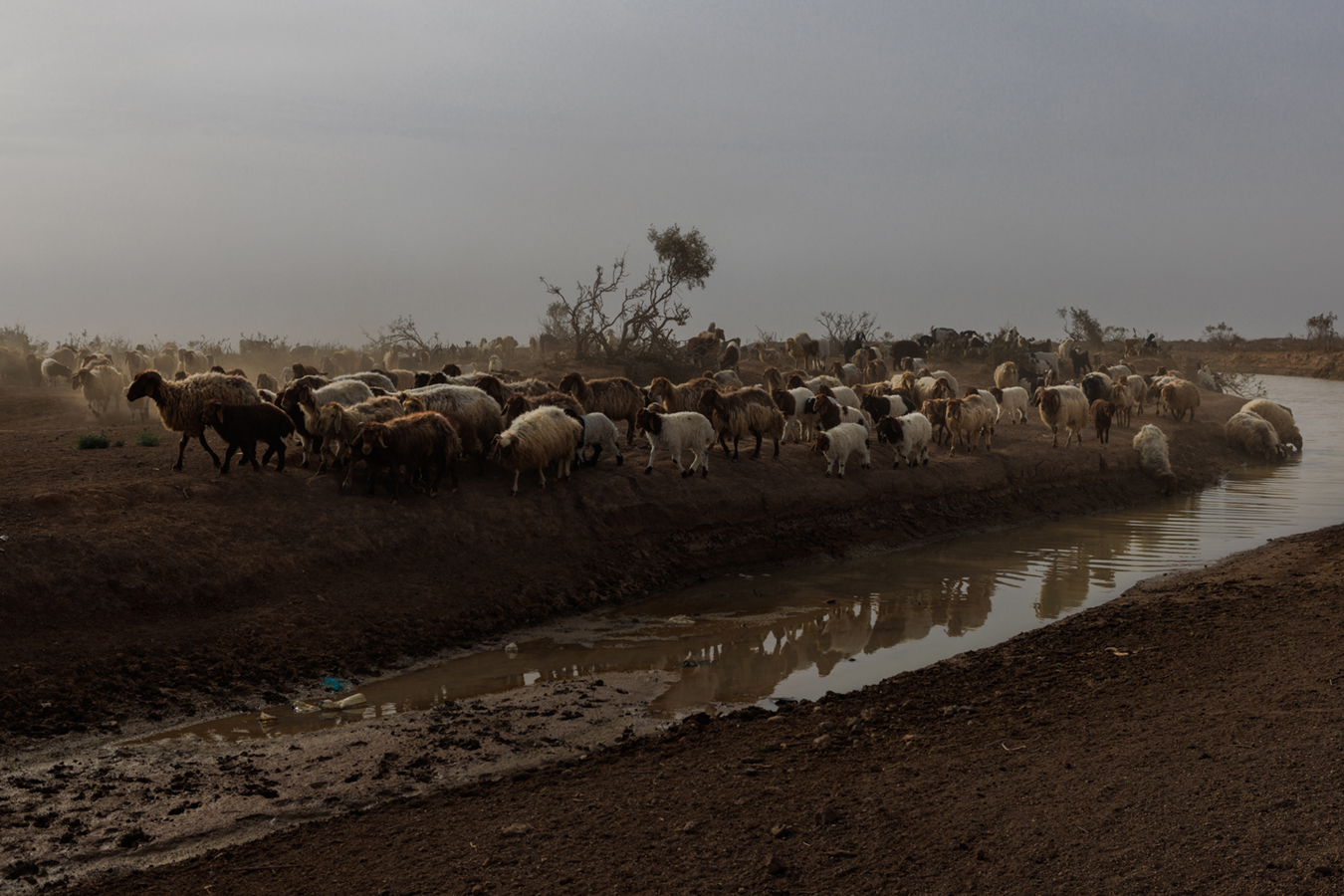
We Used To Watch The Rivers Go By
Livestock graze at Azraq Wetland in one of the wetland’s major wadis, captured shortly after rainfall. Within weeks, the intense sun and rapid evaporation will leave the area completely dry again. Local herders and their animals depend entirely on these temporary rainwater pools during wet seasons. In 2025, rainfall was exceptionally scarce, causing the wadis to dry up faster than usual. To support the community, the government has constructed desert dams to capture and preserve runoff water for both farming and grazing.
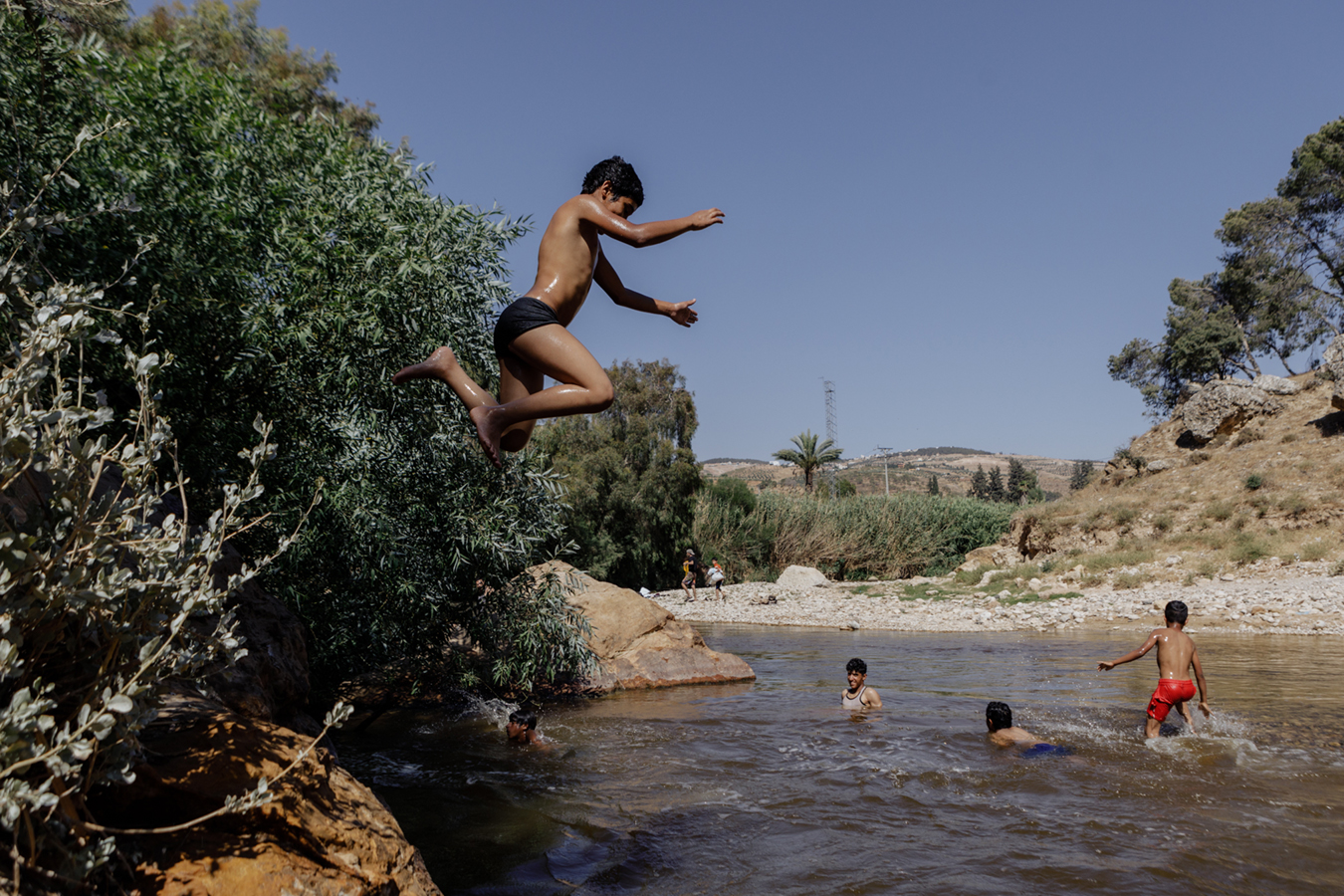
We Used To Watch The Rivers Go By
Turkish children cool down in the water at Zarqa River just outside the city of Jerash, an hour’s drive north of the city of Amman. Jordan, grappling with the challenges of climate change, including reduced rainfall and rising temperatures, is witnessing rapid urbanization and an influx of migrants due to climate and conflict, exacerbating the already critical issues of water scarcity, job competition, and strained resources. The Zarqa River is entirely within Jordan’s borders and the third largest in terms of annual flow after the Jordan and Yarmouk Rivers. However, its waters are compromised by pollution from a nearby water salination plant.
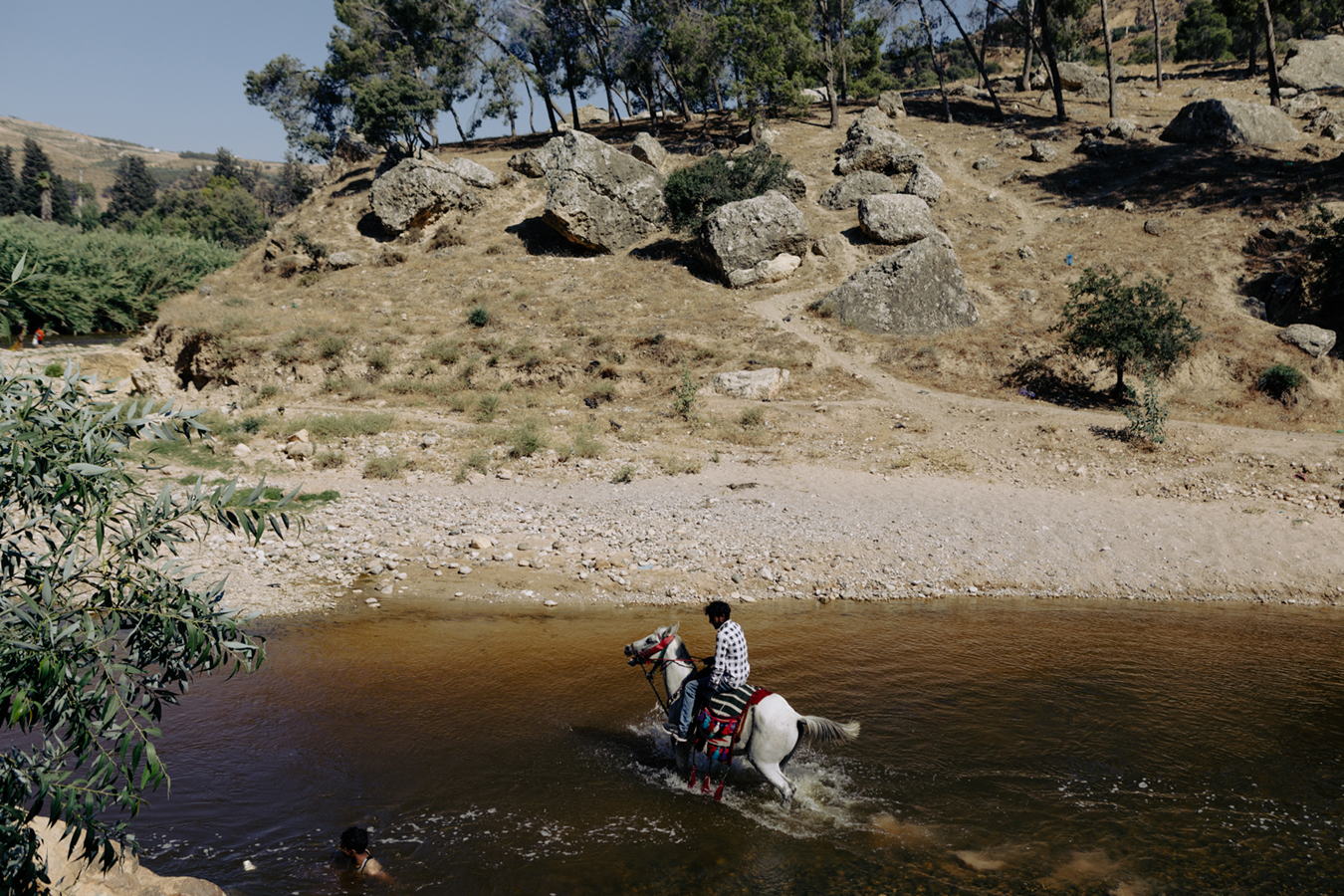
We Used To Watch The Rivers Go By
Zarqa River drains from the highlands northeast and west of Amman into the Jordan Valley, reaching the Jordan River about 65-km south of Lake Tiberius and is part of the Amman-Zarqa Basin and Kurnub Aquifer. Farmers along the Zarqa River resort to using its polluted waters for crop irrigation, posing risks to the health of thousands. As reliable water sources dwindle or run dry, communities are compelled to turn to less secure sources. In this photograph, a Palestinian refugee rides his horse alongside Turkish children in the waters of the Zarqa River. Some Palestinian refugees from the nearby Jerash camp raise horses as a means of livelihood, offering rides to families and children at a rate of 1JD per ride.